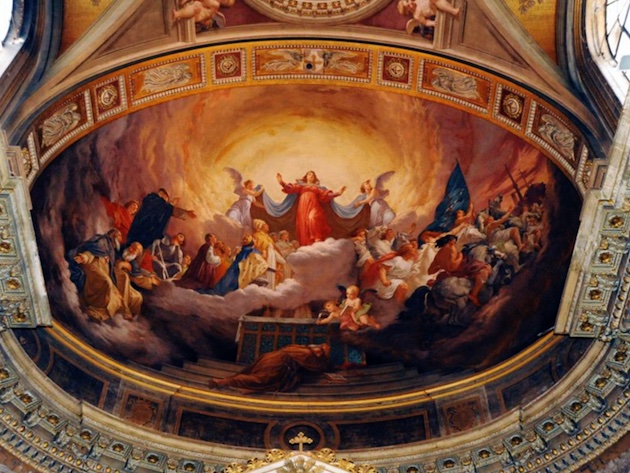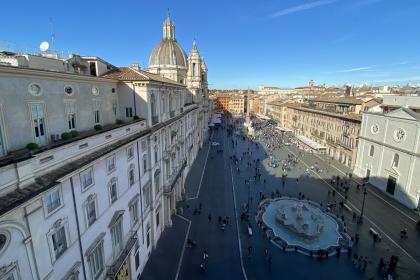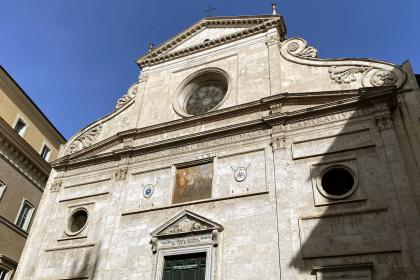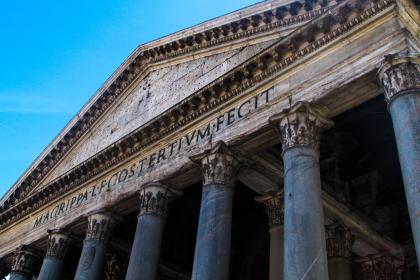
The existence of the church, which stands in via dei Banchi Vecchi, in the historic centre, is already attested between the end of the 12th and the beginning of the 13th century and is linked to the foundation and development of the Archconfraternity of the Gonfalone, which was entrusted in the sixteenth century. The restorations of the building in 1511 and 1603 are due to the same Archconfraternity.
Rebuilt by the architect Marco David between 1761 and 1764 in late Baroque forms, today the church has its nineteenth-century appearance, the result of a complete renovation - on a structural and decorative level - carried out by Francesco Azzurri and by Cesare Mariani who decorated the interior under the pontificate of Pius IX, between 1863 and 1867. The façade has two orders: in the lower one we find the entrance portal preceded by a flight of steps, while in the upper one there is a window and a triangular tympanum crowning it and curvilinear. The interior has a single nave with a vaulted roof and three chapels on each side; above the main altar there is a sixteenth-century table depicting the Madonna del Gonfalone and a Wooden Crucifix also from the sixteenth century. The high altar, made by Giuseppe Rinaldi, around the middle of the nineteenth century, houses a copy of the famous Madonna Salus Populi Romani preserved in Santa Maria Maggiore: the work is traditionally attributed to Livio Agresti, a painter present in Rome in the central years of the sixteenth century. On the choir loft to the right of the apse, there is a pipe organ, built in 1882 by Nicola Morettini; the instrument is enclosed inside a sober neoclassical wooden case. From the presbytery it is possible to access the sacristy: covered with a white ceiling, it houses a work created in the second half of the seventeenth century, assigned to Ermenegildo Costantini.
Photo credits: courtesy of Church of Santa Lucia del Gonfalone official page
Navona Square

 Condividi
Condividi
The most iconic square of Baroque Rome
The Basilica of Sant’Agostino in Campo Marzio

 Condividi
Condividi
The Pantheon

 Condividi
Condividi
Information
For the timetable of the masses and visiting conditions, please consult the contacts.
 Condividi
Condividi
Location
To find out about all accessibility services, visit the Rome accessible section.











































